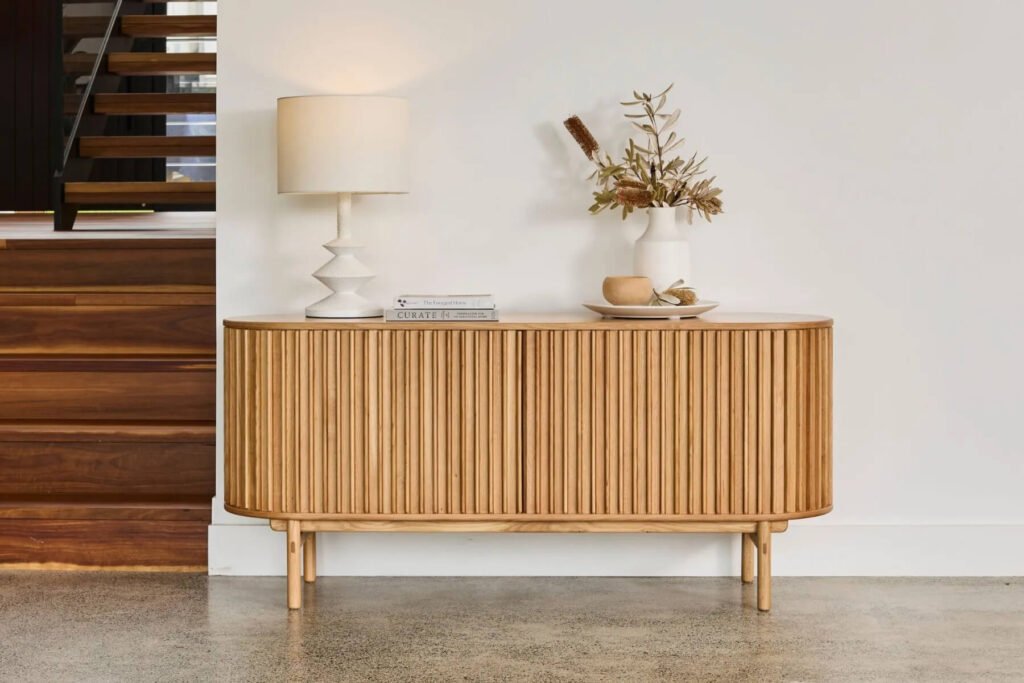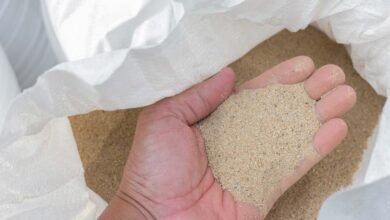Businessnewstips.com.au Guide on How to Take Care of the Sideboard

Sideboards are versatile and elegant pieces of furniture, often serving as both functional storage units and stylish focal points in living spaces. Whether your sideboard is modern, vintage, or antique, proper care is essential to maintain its beauty and longevity. In this guide, we’ll explore comprehensive tips and tricks to ensure your sideboard remains in excellent condition for years to come.
1. Understanding the Importance of Sideboard Maintenance
A sideboard, often crafted from wood, metal, or composite materials, can elevate your home’s aesthetic appeal. Here’s why maintaining it is vital:
- Longevity: Proper care prevents damage from wear and tear.
- Value Retention: Well-maintained furniture retains its market and sentimental value.
- Aesthetic Appeal: Clean and polished surfaces enhance the visual harmony of your space.
2. Identifying Your Sideboard’s Material
The first step in maintaining a sideboard is understanding the material it’s made of. Sideboards come in various finishes and materials, each requiring a unique care approach.
a. Wooden Sideboards
Wooden sideboards are classic and elegant. They can be made from hardwoods (oak, teak, walnut) or softwoods (pine).
- Key Care Tips:
- Dust regularly using a soft, lint-free cloth.
- Avoid exposing the wood to direct sunlight, which can cause discoloration.
- Use a wood polish or wax every 3-6 months to maintain its sheen.
- Protect the surface with coasters or placemats to prevent water rings and scratches.
b. Glass Sideboards
Glass adds a modern, sleek touch but requires regular cleaning to maintain its clarity.
- Key Care Tips:
- Clean with a non-abrasive glass cleaner and a microfiber cloth.
- Avoid placing heavy objects directly on the glass.
- Ensure the sideboard is positioned away from high-traffic areas to minimize the risk of accidental bumps.
c. Metal Sideboards
Metal sideboards exude an industrial charm. These pieces may have stainless steel, aluminum, or iron components.
- Key Care Tips:
- Use a damp cloth for cleaning, followed by a dry cloth to prevent water spots.
- Apply a metal polish to maintain the shine and protect against rust.
- Avoid using abrasive pads or harsh chemicals that can scratch the surface.
d. Composite Materials or Veneer Sideboards
These are budget-friendly options that mimic the look of natural wood or stone.
- Key Care Tips:
- Clean with a damp cloth and mild soap.
- Avoid exposing the material to excessive moisture, as it can cause warping or peeling.
3. Regular Cleaning Routine
Developing a consistent cleaning routine is crucial for keeping your sideboard in pristine condition.
Daily Maintenance:
- Dust the surface using a soft cloth or duster.
- Immediately wipe spills to prevent stains or damage.
Weekly Cleaning:
- Use a damp cloth to clean the entire surface, focusing on areas prone to fingerprints and smudges.
- Buff the surface with a dry cloth to restore shine.
Monthly Deep Cleaning:
- Empty the sideboard and clean both the interior and exterior.
- Inspect for damage like loose screws, peeling veneer, or scratches.
- Treat wood or metal surfaces with polish or wax for added protection.
4. Protecting Your Sideboard from Damage
Prevention is always better than cure. Here are some practical tips to safeguard your sideboard from damage:
- Use Protective Covers: Place a table runner or decorative cloth over the surface to shield it from scratches.
- Avoid Direct Sunlight: Position the sideboard away from windows or use curtains to prevent UV damage.
- Maintain Optimal Humidity Levels: Extreme humidity can cause wood to warp or metal to rust. Use a dehumidifier if necessary.
- Handle with Care: Avoid dragging objects across the surface. Instead, lift and place items gently.

5. Repairing and Restoring Your Sideboard
Accidents happen, and sideboards can sustain damage over time. Here’s how to address common issues:
a. Scratches and Scuffs on Wood
- Use a wood filler or touch-up marker that matches the wood’s color.
- For minor scratches, apply a mixture of equal parts olive oil and vinegar, then buff with a soft cloth.
b. Stains on Glass
- Mix equal parts water and vinegar, then gently scrub with a non-abrasive sponge.
- For stubborn stains, use a commercial glass cleaner.
c. Rust on Metal
- Apply a paste of baking soda and water to the rusted area.
- Scrub gently with a soft-bristled brush, then wipe clean.
6. Seasonal Care Tips
Changes in seasons can affect your sideboard’s condition.
Spring and Summer:
- Increased humidity can cause swelling in wooden sideboards. Use a dehumidifier if needed.
- Regularly polish the surface to combat wear from frequent use.
Autumn and Winter:
- Dry air from heaters can cause wood to crack. Use a humidifier to maintain balance.
- Check for condensation on glass and metal surfaces, wiping it off promptly.
7. Styling Tips for Sideboards
While maintenance is key, styling your sideboard can enhance its role as a focal point in your home.
- Layer Decor: Use varying heights and textures to create visual interest.
- Add Greenery: Incorporate small potted plants or flowers to bring life to the space.
- Group Objects: Arrange items in groups of three or five for a balanced look.
- Use Lighting: Accent the sideboard with table lamps or LED strips for an inviting ambiance.
8. Common Mistakes to Avoid
When caring for your sideboard, steer clear of these common pitfalls:
- Overloading Drawers: Excessive weight can damage the internal structure.
- Using Harsh Cleaners: Abrasive chemicals can strip finishes and cause discoloration.
- Ignoring Small Damages: Addressing minor issues promptly prevents them from worsening.
- Neglecting Regular Cleaning: Dust and dirt can accumulate, leading to long-term damage.
9. Eco-Friendly Cleaning Solutions
For those who prefer sustainable cleaning practices, here are some eco-friendly alternatives:
- Vinegar and Water: Effective for cleaning glass and metal surfaces.
- Olive Oil and Lemon Juice: Natural polish for wooden sideboards.
- Baking Soda Paste: Ideal for tackling tough stains on metal or composite materials.
10. Frequently Asked Questions (FAQs)
Q1. How often should I polish my wooden sideboard?
Polish your wooden sideboard every 3-6 months to maintain its shine and protect the finish.
Q2. Can I use any cleaner on my glass sideboard?
Avoid abrasive cleaners. Opt for a commercial glass cleaner or a vinegar-water solution.
Q3. What should I do if my sideboard’s veneer starts peeling?
Apply a thin layer of wood glue under the peeling veneer, press firmly, and allow it to dry.
Q4. How can I protect my sideboard during a move?
Wrap it in furniture blankets or bubble wrap to prevent scratches and damage.
Q5. Is it safe to place a sideboard near a fireplace?
Avoid placing it too close to a heat source, as excessive heat can damage the material.
Conclusion
Taking care of your sideboard doesn’t have to be a daunting task. With regular maintenance, preventive measures, and prompt repairs, you can preserve the functionality and beauty of this versatile piece of furniture. By following the tips shared in this Businessnewstips.com.au guide, your sideboard will remain a cherished centerpiece in your home for years to come.
Let me know if you need any further modifications!




